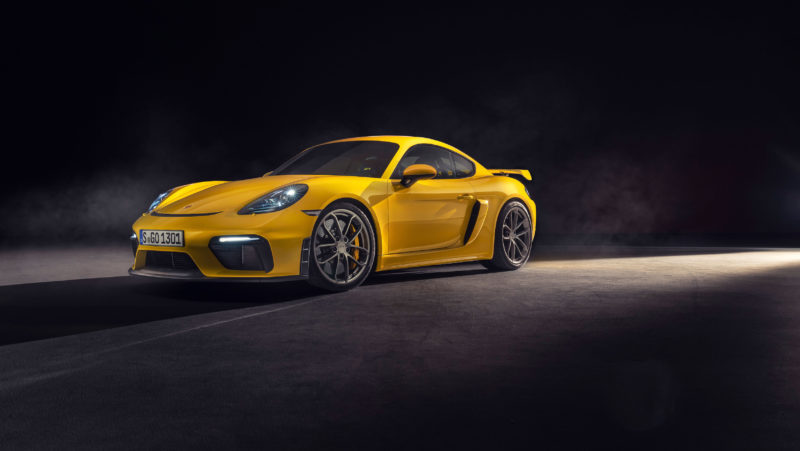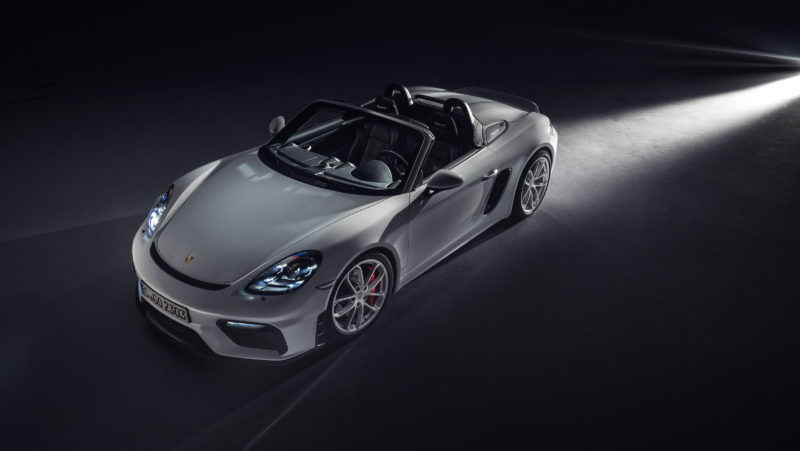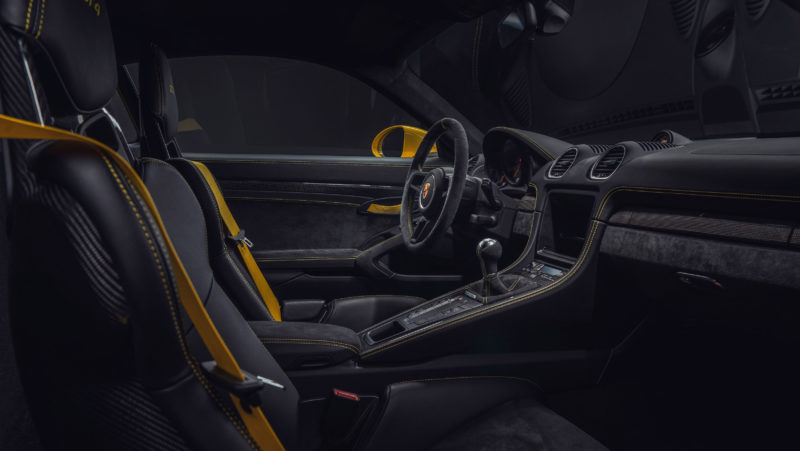
While the 718 Cayman GTS brought plenty to the party, something was missing. True, the turbo four was punchier than the previous generation’s six-cylinder atmospheric, but there was something amiss. Power and torque figures, as important as they are, need urgency and an appropriate soundtrack to power a truly memorable sports car.
Rejoice, Natural Aspiration Has Returned
The thirst for that flat-six scream is something that comes up in conversation when criticizing the latest generation of Caymans and Boxsters, and the gods have listened. Sitting behind the cabin in the new 718 Spyder and 718 Cayman GT4 is a new 4.0-liter flat six derived from the 991 Carrera’s turbomotor, sans turbocharger. With GT-appropriate levels of response, a six-speed manual, and a redline of 8,000 rpm, the new powerplant promises more excitement.
The 415 horsepower and 310 lb-ft of torque are nothing to sniff at, but the takeaway is that those figures will be produced in a more rewarding way. While the torque figure is almost identical to the 718 GTS models, the peak torque is produced between 5,000 and 6,800 rpm. Where the turbo motor made that from 1,900 rpm, natural aspiration means a motor that encourages the driver to spin the motor to the stratosphere.

Both cars share the same chassis.
To keep this new powerplant eco-friendly, it sports Piezo injectors for direct fuel injection—the first time ever in a high-revving engine. In addition, the motor uses adaptive cylinder control. In part-load operation, it temporarily interrupts the injection process in one of the two cylinder banks, thus reducing fuel consumption.
Downforce and a Sharpened Chassis
Fifty percent more downforce comes from a single-chamber arch rear silencer which creates space in the rear section for a functional diffuser. To maintain a usable balance, the front employs a spoiler lip, which is flanked by air curtains that calm the air flow along the front wheels. That new arrangement makes the Spyder the first of the Boxster family to generate real downforce at the rear axle.

The new Spyder is the first Boxster to enjoy real downforce at the rear.
Both cars share the same chassis. With ball joints, a ride height 30mm lower than before, and recalibrated PSM and PTV systems further sharpen the ride. That, in conjunction with new ultra-high-performance tires from Porsche amount to a reported ‘Ring time in the 7:30-range. For Porsche’s entry level GT car to best a 997 GT3, a car with the same power output, by roughly ten seconds speaks to the extent they’ve refined the chassis. This will be a world-beater.

The GT4 also comes with the option of a Clubsport package. This includes a rear steel roll bar, a hand-held fire extinguisher and a six-point seatbelt on the driver’s side.
